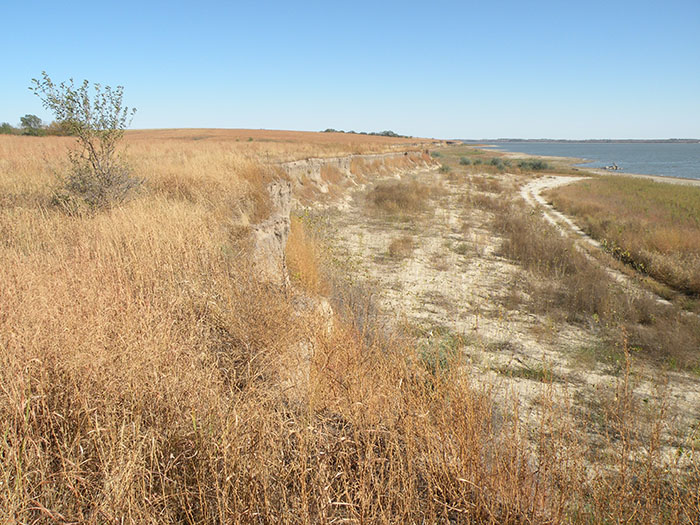Restoring Ecosystems with USACE
Posted on Wednesday, March 8th, 2017 by Jason DavisIn Federal Services, tagged in Tags: ecosystem restoration, usace

Maintaining or restoring healthy habitat for native plant and animal species is no easy feat. This task is something we tackle through our ecosystem restoration work. Our experience includes developing shoreline stabilization measures to reduce and direct in-lake sediment deposition currently impacting reservoirs in the region. These projects are expensive, and the key is to prioritize the habitat areas that are of the highest quality or provide the greatest potential habitat benefit.
This restoration work is beneficial for a number of reasons. Reestablishing and improving habitat areas is vital for the preservation of native plant and animal species that call this region home. In addition, whether directly or indirectly, ecosystem restoration projects seek to maintain or provide new opportunities for people to access and interact with the natural environment. These benefits improve quality of life and help communities become more invested and connected to the natural world.
In working with the United States Army Corps of Engineers (USACE), we’ve partnered on a number of ecosystem restoration projects. On some, we have stabilized areas that are being degraded. This can be achieved through the use of rock and other hard elements or by adding vegetation and slope. We have also made areas accessible to the public to foster a connection with nature.

Below are a few ecosystem restoration projects on which we’ve partnered with USACE.
Ecosystem Restoration Harlan County Lake: Located in the midst of rugged terrain and fine grained soils susceptible to erosion, Harlan County Lake in south-central Nebraska is experiencing significant shoreline erosion. This erosion is carried through the lake and settles across the entrance to lake coves, cutting off these high habitat areas from the main body of the lake at normal lake levels. These coves provide valuable habitat for the lake’s fish species, so access to the coves is critical to their sustainability. We completed a preliminary feasibility study and plan formulation document for ecosystem restoration measures for the area that focused on maintaining the connection between the highest priority lake coves and the main body of the lake. These ecosystem restoration measures include linear shoreline protection, perpendicular breakwater structures, cove mouth dredging, and deep water habitat structures.
Rathbun Lake Fish Out Migration Study: Our team completed a Section 1135 preliminary assessment of fisheries sustainability and aquatic habitat restoration at Rathbun Lake, Iowa. The restoration goal was to reduce the out-migration for fish species, specifically walleye, and improve aquatic habitat through the targeted stabilization of shoreline erosion and placement of in-lake structures. The recommendation from this assessment was the installation of an electric fish barrier at the outlet and rock slope protection at key areas within the lake.
Brush Creek – Blue River Confluence Preliminary Assessment: The Affinis team completed a Section 206 preliminary assessment for a 316 acre site at the confluence of Brush Creek and the Blue River in Kansas City, Missouri. This assessment focused on characterizing habitat challenges on the project site and identifying a set of preliminary, alternative, restoration concepts to provide habitat benefits. Ecosystem restoration measures included wetland and meadow restoration, vegetated berm buffers, and enhancement of shallow-water and bottomland forest areas.
Rathbun Lake Aquatic Habitat Restoration Project: Building off our previous assessment for Rathbun Lake, we are completing conceptual engineering and a preliminary feasibility level design of alternative measures and plans to restore aquatic habitat and decrease fish emigration downstream into the Chariton River. We completed a site evaluation and shoreline survey, including the use of a remote controlled boat with on-board GPS equipment for a bathometric survey. The collected data is used to scale and design the habitat restoration measures, generate material quantities, and estimate project costs for potential improvements. In addition, an evaluation of various fish barrier methods is being evaluated.